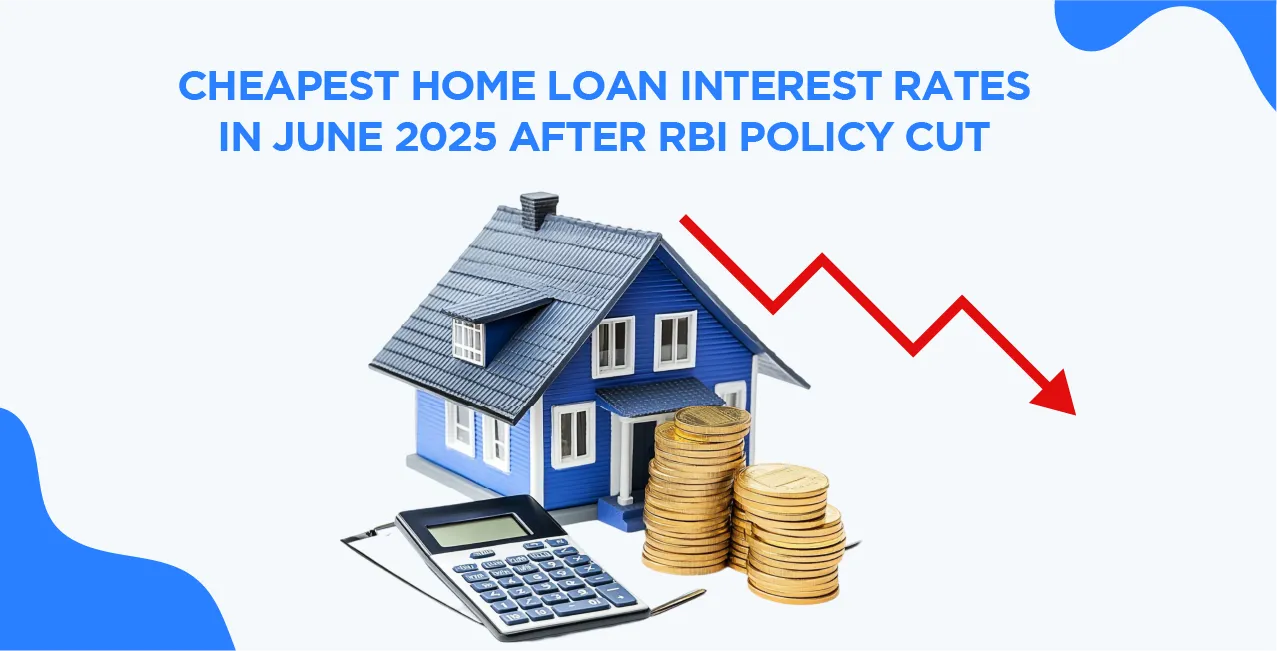
Author
LoansJagat Team
Read Time
4 Min
31 Jul 2025
Retail Mortgage Loans by NBFCs, HFCs to Touch ₹20 Trillion by FY28: ICRA
Retail mortgage-backed loans offered by Non-Banking Financial Companies (NBFCs) and Housing Finance Companies (HFCs) in India are expected to cross the ₹20 trillion mark by FY28, up from ₹13 trillion estimated in FY25, according to the latest report by rating agency ICRA.
The growth will be largely fuelled by rising demand for home ownership across Tier II and Tier III cities. Secondly, the major reason for this rising demand is the lender’s declining trust on unsecured loans.
Affordable Housing Finance Companies (AHFCs), a significant sub-segment are projected to grow their share from ₹1.4 trillion currently to ₹2.5 trillion by FY28, growing at a CAGR of 20–22%, compared to 17–19% growth for overall NBFC and HFC retail mortgage lending.
The Indian Obsession with Owning a Home
India’s deep-rooted cultural inclination towards home ownership continues to influence buyer behaviour. According to a report by Statista, housing remains the most preferred investment choice, even more than stocks or mutual funds.
Home loans have emerged as the top financing option for prospective homeowners, with 71% of buyers relying on mortgages to fund their purchases, as per the Hindustan Times and CREDAI report.
Interestingly, while owning a house is considered a mark of financial stability, analysts caution against the over-romanticisation of real estate investment.
A recent Economic Times article highlights how India’s “obsession” with buying homes, even at inflated prices and long-term EMIs, might be pushing them into loan traps. This is especially true in urban regions where job mobility and lifestyle flexibility are crucial.
Factors Influencing the Decision to Own a House
In 2025, purchasing a home is no more a need, it’s a want. This ‘aspiration’ of buying a home or real estate property, which would give great return on investment is influenced by many factors.
A recent survey cited in multiple reports, including from CREDAI and CII-ANAROCK, identifies the top factors:
Before this table, it is evident that modern buyers are moving beyond price as the sole determinant. Instead, they are looking for value, combining location, amenities, and long-term viability into their decision-making process.
Post this, it becomes clear that developers and financiers must adapt to these evolving expectations to remain relevant.
Steady Growth Backed by Strong Credit Metrics
The financial health of Affordable Housing Finance Companies underpins the sector’s projected growth. As per ICRA’s analysis of AHFCs constituting 70% of the industry’s Assets Under Management (AUM), the sector has seen:
- Non-performing assets (NPAs) consistently in the 1.1 - 1.3% range over the past three years.
- Credit cost has remained moderate at around 0.3% of average managed assets.
- The average Loan-to-Value (LTV) ratio stands at 55%, suggesting sufficient collateral backing.
These numbers reflect the strong asset quality maintained by AHFCs, even while catering to underserved markets.
It is important to note that the focus on self-construction loans also shows a behavioural shift, as more rural and semi-urban borrowers look to build rather than buy homes.
Strong Earnings, But Efficiency Key Amid Rising Competition
The AHFC segment has also shown commendable financial performance, backed by low credit costs and reasonable margins. According to ICRA, their return on average managed assets (RoA) stands at 3.5–3.6%, although operating costs remain higher than prime-lending peers.
While strong profitability metrics support near-term expansion, ICRA has flagged growing competitive pressure from larger NBFCs and banks, which could compress yields and erode margins.
In such a scenario, improving operating efficiency becomes critical. AHFCs’ manageable gearing levels and healthy earnings, however, provide a cushion for sustainable growth.
Conclusion: A Promising Outlook with Necessary Caution
With homeownership aspirations continuing to surge, especially in Tier II and Tier III cities, the outlook for mortgage-backed lending by NBFCs and AHFCs remains positive.
Structural strengths, such as low NPAs, reasonable gearing, and strong margins support this trajectory. However, rising competition, evolving consumer preferences, and changing real estate dynamics will require these firms to adapt swiftly.
ICRA’s Stable outlook reflects confidence in the sector’s resilience. Yet, to capitalise fully on this growth, AHFCs and NBFCs must not only expand reach but also embed greater efficiency and consumer-centric offerings into their operations.
Other News Pages | |||
Retail Mortgage Loans by NBFCs, HFCs to Hit ₹20 Trillion by FY28 | |||
About the Author

LoansJagat Team
‘Simplify Finance for Everyone.’ This is the common goal of our team, as we try to explain any topic with relatable examples. From personal to business finance, managing EMIs to becoming debt-free, we do extensive research on each and every parameter, so you don’t have to. Scroll up and have a look at what 15+ years of experience in the BFSI sector looks like.

Quick Apply Loan
Subscribe Now
Related Blog Post

LoansJagat Team • 10 Jun 2025

LoansJagat Team • 06 Jun 2025

LoansJagat Team • 22 Sep 2025